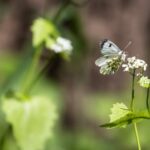Border gardens are a fantastic way to add curb appeal and visual interest to your outdoor space. If you’re looking for border garden ideas, you’ve come to the right place. In this article, we will explore everything you need to know about creating a stunning border garden, from planning and plant selection to design and maintenance.
A border garden is a carefully curated strip of plants that runs along the edge of a lawn, sidewalk, driveway, or other landscaping feature. These gardens can vary in size and shape, making them a versatile option for adding beauty and structure to your outdoor area.
In the following sections, we will delve into the key aspects of creating and maintaining a beautiful border garden. From understanding your space and climate to selecting the right plants and incorporating hardscape elements, we’ll provide all the information you need to bring your border garden ideas to life. So let’s get started on creating the perfect border garden for your home.
Planning Your Border Garden
When it comes to planning your border garden, understanding your space and climate is essential for creating a successful and thriving garden. Before you start planting, take the time to assess your garden’s layout and the environmental conditions that will impact your plant selection.
Evaluating Your Space
Begin by taking note of the size and shape of your garden area. Consider any existing structures, such as fences or walls, that may act as a border for your garden. Take measurements to determine the available planting space and make note of any areas that receive more or less sunlight throughout the day.
Understanding Your Climate
Researching your local climate is crucial for selecting plants that will thrive in your specific region. Take note of the average temperatures, rainfall patterns, and soil conditions in your area. Consider factors such as frost dates and potential microclimates within your garden space.
Taking the time to understand your space and climate will ensure that you make informed decisions when it comes to plant selection, layout, and maintenance of your border garden. With this knowledge, you can create a beautiful and flourishing garden that will enhance your outdoor space for years to come.
Choosing the Right Plants for Your Border Garden
When it comes to choosing the right plants for your border garden, there are several factors to consider. Understanding your space and climate is crucial in ensuring that your plants thrive and create a visually stunning garden. Before making any selections, take note of the amount of sunlight and shade your garden receives throughout the day. Additionally, consider the type of soil in your garden and choose plants that are well-suited for those conditions.
Understanding Your Space and Climate
Tips for Selecting the Best Flowers, Shrubs, and Foliage
Once you have assessed your space and climate, you can then move on to selecting the best flowers, shrubs, and foliage for your border garden. When choosing plants, think about the overall aesthetic you want to achieve.
Consider factors such as color, height, texture, and bloom time to create a harmonious look in your garden. It’s also important to select a variety of plants that will provide interest throughout the year, whether through blooms in spring and summer or colorful foliage in fall and winter.
Whether you’re looking for vibrant flowers such as roses or daisies, lush shrubs like hydrangeas or boxwoods, or striking foliage such as ornamental grasses or ferns, there are countless options to choose from when it comes to filling out your border garden. Take inspiration from various sources such as gardening books, online resources, and local nurseries to discover new plant varieties that will complement your space and create a stunning border garden display.
Designing a Border Garden
When it comes to designing a border garden, the layout, color schemes, and plant combinations play a crucial role in creating an aesthetically pleasing and harmonious space. One of the key factors to consider when designing your border garden is the layout.
You can opt for a traditional straight-edged border, a curved or winding design, or even a geometric pattern for a more modern look. The choice of layout will largely depend on the overall style of your garden and the space available.
Another aspect to consider is the color scheme of your border garden. Whether you prefer a monochromatic scheme for a serene and calming effect, or a vibrant mix of colors for a lively and dynamic feel, understanding color theory can help you create the desired ambiance in your garden. You can also explore complementary or contrasting color combinations to add visual interest and drama to your border garden.
In addition to layout and color schemes, choosing the right plant combinations is essential for creating an eye-catching border garden. It’s important to consider factors such as plant height, texture, bloom time, and maintenance requirements when selecting plants for your garden. Mixing different types of flowers, shrubs, and foliage can add depth and dimension to your border garden while ensuring year-round interest.
| Aspect | Consideration |
|---|---|
| Layout | Straight-edged border, curved or winding design |
| Color Scheme | Monochromatic scheme vs vibrant mix of colors |
| Plant Combinations | Consider plant height, texture, bloom time & maintenance requirements |
By paying attention to these aspects of designing a border garden – layout, color schemes, and plant combinations – you can create a visually appealing and cohesive outdoor space that reflects your personal style and preferences. Whether you’re aiming for a formal look with structured lines and symmetry or a more relaxed atmosphere with naturalistic planting arrangements, thoughtful planning and creative execution are key to achieving the perfect border garden.
Maintaining Your Border Garden
Once you have established your beautiful border garden, it is essential to maintain it properly to ensure that it looks its best year-round. Here are some tips to help you keep your garden in top shape:
1. Regular watering and feeding: Proper hydration and nutrition are essential for the health of your plants. Make sure to water your border garden regularly, especially during hot and dry spells. Additionally, fertilize your plants as needed to provide them with the necessary nutrients for healthy growth.
2. Pruning and deadheading: Regular pruning and deadheading can help promote new growth and prolong the blooming season of your flowers. Remove spent blooms, trim back overgrown branches, and shape your plants to maintain a tidy and visually appealing garden.
3. Weed control: Weeds can quickly take over a border garden if left unchecked. Regularly inspect your garden for any unwanted plants and remove them promptly to prevent them from competing with your desired plants for resources.
4. Pest and disease management: Keep an eye out for any signs of pests or diseases in your border garden and take action immediately if you notice any issues. Introduce beneficial insects, use organic pesticides, or apply other appropriate measures to protect your plants from potential threats.
Following these maintenance tips will help ensure that your border garden remains vibrant and attractive throughout the year.
Creative Border Garden Ideas
Border gardens are a great way to add charm and personality to your outdoor space. These gardens are typically planted alongside the edges of a lawn or garden, adding visual interest and defining the borders of the space. When it comes to creating a border garden, there are endless possibilities for unique themes, shapes, and features that can make your garden truly stand out.
Here are some creative border garden ideas to consider for your own outdoor oasis:
- Cottage Garden: Create a charming and cozy feel with an English cottage garden theme. Use a mix of colorful flowers such as roses, daisies, and hollyhocks, along with traditional cottage garden plants like lavender and delphiniums.
- Wildlife Habitat: Encourage local wildlife to visit your garden by incorporating plants that attract butterflies, bees, and birds. Consider adding bird feeders or butterfly houses to enhance the habitat.
- Formal Garden: For a more structured look, opt for a formal garden design with neatly trimmed hedges, geometric shapes, and symmetrical planting arrangements.
In addition to themed border gardens, consider incorporating unique shapes and features into your design:
- Spiral Gardens: Create a visually appealing focal point with a spiral-shaped border garden. Plant taller flowers in the center and shorter ones towards the edges to accentuate the spiral shape.
- Water-wise Gardens: In areas with limited water resources, consider designing a border garden featuring drought-tolerant plants such as succulents and ornamental grasses.
- Vertical Gardens: Utilize trellises or planters mounted on walls or fences to create a vertical border garden using climbing plants like ivy or bougainvillea.
These creative border garden ideas can inspire you to think outside the box when it comes to designing your own unique outdoor space.
Remember that each idea should fit not only aesthetically but also practically into your location’s climate conditions so be sure you have taken into account all those important details before starting your project.
Incorporating Hardscape Into Your Border Garden
When it comes to creating a stunning border garden, incorporating hardscape elements can add structure, visual interest, and functionality to your outdoor space. Pathways are an essential element that can guide visitors through your garden and provide easy access for maintenance. Gravel, stepping stones, or even brick or concrete pathways can beautifully complement the organic elements of your garden while providing a clean and practical walkway.
Edging is another hardscape element that can define and enhance the borders of your garden beds. It provides a clean separation between the lawn and garden beds and prevents soil from spilling over onto the grass. You can choose from a variety of materials such as wood, metal, plastic, or stone to create a look that complements the style of your garden.
In addition to pathways and edging, adding non-plant elements like statues, birdbaths, or trellises can further enhance the overall design of your border garden. These decorative features can add focal points and create visual interest within your garden space. By carefully selecting these items to complement your plant choices and overall design scheme, you can create a cohesive and visually appealing landscape.
| Hardscape Element | Benefits |
|---|---|
| Pathways | Provides easy access for maintenance; complements organic elements |
| Edging | Clean separation between lawn and garden beds; prevents soil spillage |
| Decorative Features | Adds focal points; creates visual interest within the garden space |
Showcasing Your Border Garden
In conclusion, creating and maintaining a stunning border garden can be a rewarding endeavor for any gardening enthusiast. The careful planning, selection of plants, and thoughtful design can result in a beautiful outdoor space that is sure to be appreciated by others. By understanding your space and climate, choosing the right plants, and implementing creative designs, you can cultivate a border garden that is not only visually appealing but also sustainable and low-maintenance.
Once your border garden is established, it’s time to showcase its beauty. Whether you opt for sharing on social media platforms like Instagram or Pinterest, starting a blog about your gardening journey, or simply inviting friends and family over to enjoy the space in person, there are various ways to highlight the hard work you’ve put into your garden.
Sharing tips on plant care, design inspirations, and maintenance routines can also help inspire others to start their own border gardens.
By incorporating hardscape elements such as pathways and edging, you can further enhance the visual appeal of your border garden. These non-plant features not only add structure and organization but also serve as focal points within the garden.
Additionally, utilizing unique themes and shapes in your border garden can set it apart from traditional gardens, making it more intriguing to showcase on social media platforms or in person. With careful planning and attention to detail, your border garden will undoubtedly become a source of pride and inspiration for others seeking ideas for their own outdoor spaces.
Frequently Asked Questions
What Is the Best Low Maintenance Edging?
The best low maintenance edging for a garden would be materials like stone, brick, or concrete. These options require little to no upkeep and provide a clean and neat border for your garden.
What Is the Best Shape for a Garden Border?
The best shape for a garden border is largely dependent on the overall design of your garden. However, simple shapes like gentle curves or straight lines tend to be the most aesthetically pleasing and easy to maintain over time.
How Do I Create a Low Maintenance Border?
To create a low maintenance border, it’s important to start with good planning and choose the right materials. Opt for durable and long-lasting edging materials, minimalistic design, and consider using mulch or ground cover to reduce weed growth and minimize upkeep.

Welcome to my gardening blog! I am passionate about plants and enjoy sharing my knowledge and experiences with others. In this blog, I will write about everything related to gardening, from tips on how to get started to updates on my own garden projects.





